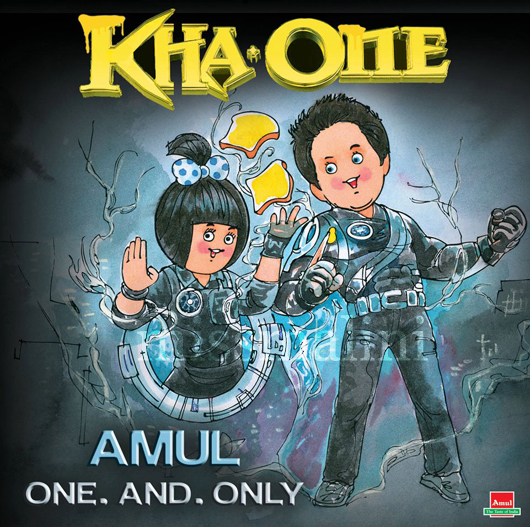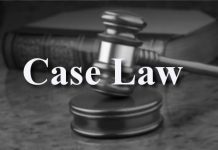
This article is written by Adarsh Maurya.
We all have seen parody columns in magazines or newspapers. Indeed, they give us good laughter dose but have we ever thought about the aftermath of those caricatures? What happens when one’s “laugh with” acquires the color of “laugh at”? What conflict arises between the publication of innocent humor and defamation? This article tries to give answers to some of these above-laid questions. But before it, we must understand the meaning of public figures, parody, and defamation.
A public figure is a person such as a politician, celebrity, or business leader, who has a certain social position within a certain scope and a significant influence and so is often widely concerned by the public, can benefit enormously from society, and is closely related to public interests in society.[1]Thereafter, “Parody is an imitation of the style of a particular writer, artist, or genre with deliberate exaggeration for comic effect.”[2], in other words, “parody is a literary or musical work in which the style of an author or work is closely imitated for comic effort or in ridicule.”[3]Delhi High Court explained term parody “Parody and any imaginative expression are not really lies at all and perhaps not even statement of facts because no reasonable reader could actually believe them to be stating actual facts. It was also held that no religion is without humor and there should be a high level of tolerance in every religion.”[4] Defamation is recognized under both civil and criminal laws of India. Defamation has two types namely slander and libel. Defamation is defined as a publication of a statement which reflects on a person’s reputation and tends to lower him in the estimation of right-thinking members of the society generally or tends to make them shun or avoid them[5]. As mentioned, not only in torts but defamation is also recognized in the penal provision under section 499 IPC, 1860 with the five exceptions.
All these three concepts are intermingled with each other. To decide the locus standi of the petitioner, it is seen that who is an aggrieved person in a defamation suit? Hon’ble Supreme Court of India has laid down precisely that “person aggrieved may vary according to the context of the Statute and facts of the case, nevertheless normally; a person aggrieved must be a man who has suffered a legal grievance; a man against whom any person has refused something, or wrongfully affected his title to someone”..In the context of hurting religious feelings Gujarat high court laid down that mere the hurt to religious feeling is not recognized by the Civil Court.[6] Thus, it is the legal injury which matters not the emotional or mental injury to constitute person aggrieved under the defamation suit.
Parody defamation cases often involve conflict between innocent humor and defamation of the public figure. The onus of proving that publication is not capable of innocent humor lies on the petitioner. It is in the public interest that the reputation of public figures should not be debased falsely[7]. In applying the innocent construction rule, courts must give the allegedly defamatory words their natural and obvious meaning. Courts must, therefore, interpret the allegedly defamatory words as they appeared to have been used and according to the idea they were intended to convey to the reasonable reader. But, if from the publication “a defamatory meaning was clearly intended and conveyed, this court will not strain to interpret allegedly defamatory words in their mildest and most inoffensive sense in order to hold them non libelous under the innocent construction rule”[8]Also, courts are required to read the alleged defamatory words as a whole and accord them their natural and obvious meaning.[9] Thus, whenever there is defamation suit filed against parody, that publication is attributed natural and obvious meaning, then it is judged whether still it is capable of innocent humor or not? If the publication still appears to be defamatory, then the only further action is taken.
Disclaimer comes as the rescue for the many publishers in the parody defamation cases. A disclaimer is a statement that is meant to prevent an incorrect understanding of something (such As a book, a movie, or an advertisement)[10] of Supreme Court stated that in order to escape a defamatory statement there should be the use of disclaimer[11]. Australian court developed the bane and antidote test[12], according to which if any alleged defamatory text or picture is accompanied by disclaimer prescribing just for the humor purpose then it must be taken just for the humor purposes only and nothing more or less than that.
Lastly, one question still needs to be considered i.e. whether alleged parody is defamatory in the eyes of right thinking members of the society or not? But before this, a question arises who are right thinking members of the society? Do these people remain constant in every case or they change from case to case? The test is whether a right thinking person would construe the words in their ordinary meaning as lowering the reputation of the plaintiff. It is not the opinion of the society which matters but the society’s right-thinking people which matter.[13]To write or say of a man something that will disparage him in eyes of a particular section of the community but will not affect his reputation in the eyes of the average right-thinking men is not actionable under the law of torts[14].Practically it impossible to define right thinking members in the society rather it is easy to define who are not right thinking members in a particular case. Every person who gets affected due to the outcome of the case is not the right thinking member of the society in that particular case. Thus any member of the society who is not from any interested party side and comes with the ability to see things in their original and natural color then that will be considered the right thinking member of the society.
The humor of one party must not become the insult to other. Exercising freedom of expression through parody must not leave its color of innocent humor and certainly not lead to defamation of the person. Media must keep itself only limited to publication of truth with the flavor of innocent humor only and on the other side public figure should become more liberal in their approach towards parody columns. Press Council of India has also published certain Norms of Journalistic Conduct[15] which every journalist is required to adhere properly. In a nutshell, we all should learn and implement the difference between “laugh at” and “laugh with”.
References
[1] Ferrari Anne, “Using Celebrities in Abnormal Psychology as Teaching Tools to Decrease Stigma and Increase Help Seeking” 4 SAGE 13(2016).
[2] Oxford English Dictionary [2nd Edition (2009)]
[3] Webster’s New International Dictionary(1926)
[4] Ajay Gautam v. Union of India (2015) SCC 6479.
[5] W VH Rogers(16th.), Winfield and Jolowicz on Tort (Sweet & Maxwell, London,2002)
[6] UshaBen Navichandra Trivedi v. Bhagyalakshmi Chitra Mandir, (AIR 1978 Guj 13 )
[7] Reynolds v. Times Newspapers Ltd [2001] 2 AC 127
[8] Quinn v.jewel food stores, Inc. 658 N.E. 1225(1995).
[9] Stein v. Marriott ownership resorts, inc,960798-CA(1997)
[10] Merriam Webster.’s collegiate dictionary(10th ed.).(1999).Springfield, MA::Merriam Webster incorporated.
[11] Prakash Jha Productions v Bata India Ltd. &ors (2013)1 SCC 729.
[12] Charleston & Smith v Newsgroup newspaper ltd (1995) 2 AC 65
[13] Bryne v. Deane [1937] 1 KB 318
[14] Tolley v. J.S Fry [1930] I KB 467
[15] Press Council of India, Norms Of Journalistic Conduct, Edition (2010)












